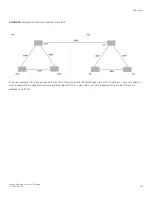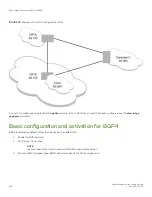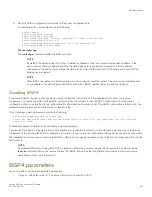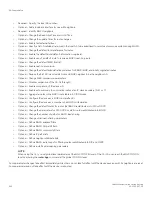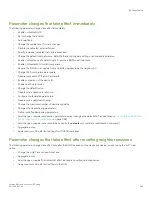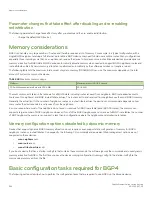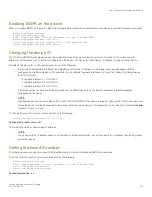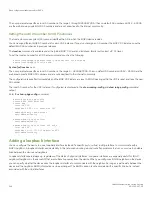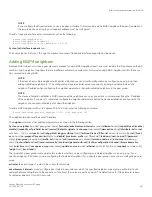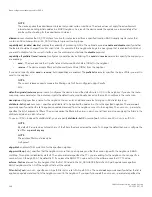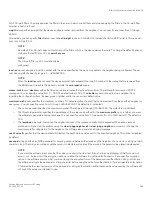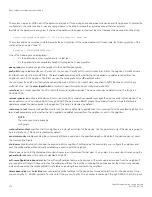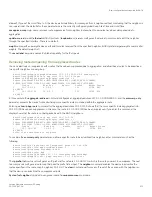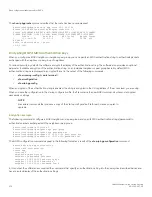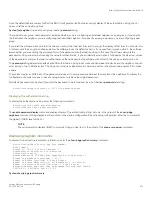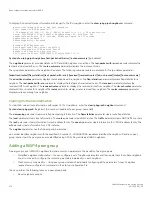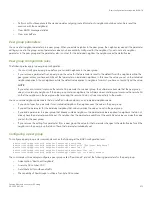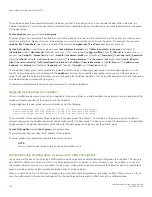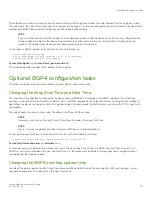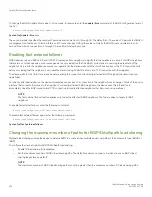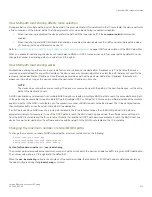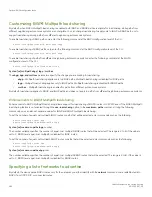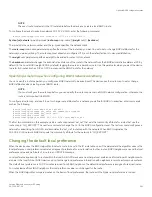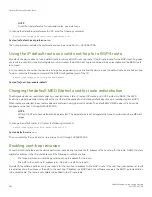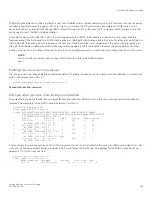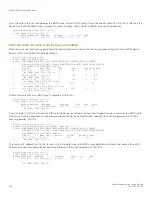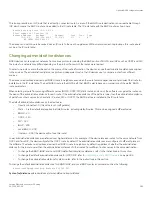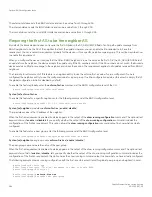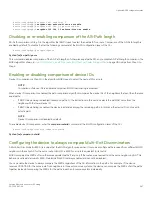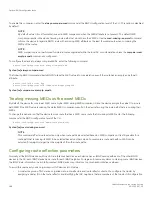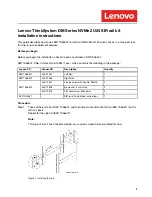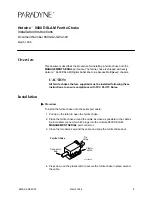
Since the default behavior does not affect the BGP4 configuration itself but does encrypt display of the authentication string, the CLI
does not list the encryption options.
Syntax:
[no] neighbor
{
ip-addr
|
peer-group-name
}
password
string
The
ip-addr
|
peer-group-name
parameter indicates whether you are configuring an individual neighbor or a peer group. If you specify
the IP address of a neighbor, you are configuring that individual neighbor. If you specify a peer group name, you are configuring a peer
group.
If you want the software to assume that the value you enter is the clear-text form and to encrypt the display of that form, do not enter 0 or
1. Instead, omit the encryption option and allow the software to use the default behavior. If you specify encryption option 1, the software
assumes that you are entering the encrypted form of the password or authentication string. In this case, the software decrypts the
password or string you enter before using the value for authentication. If you accidentally enter option 1 followed by the clear-text version
of the password or string, authentication will fail because the value used by the software will not match the value you intended to use.
The
password
string
parameter specifies an MD5 authentication string to secure sessions between the device and the neighbor. You can
enter a string of up to 80 characters. The string can contain any alphanumeric characters, but must be placed inside quotes if it contains
a space.
The system creates an MD5 hash of the password and uses it to secure sessions between the device and the neighbors. To display the
configuration, the system uses a 2-way encoding scheme to retrieve the original password.
By default, password is encrypted. If you want the password to be in clear text, insert a 0 between
password
and
string.
device(config-bgp)# neighbor 10.157.22.26 password admin
Displaying the authentication string
To display the authentication string, enter the following commands.
device(config)# enable password-display
device(config)# show ip bgp neighbors
The
enable password-display
command enables display of the authentication string, but only in the output of the
show ip bgp
neighbors
command. String display is still encrypted in the startup configuration file and running configuration. Enter the command at
the global CONFIG level of the CLI.
NOTE
The command also displays SNMP community strings in clear text, in the output of the
show snmp server
command.
Displaying neighbor information
To display IPv6 unicast route summary information, enter the
show ip bgp ipv6 summary
command:
device(config-bgp)# show ip bgp ipv6 summary
BGP4 Summary
Router ID: 10.1.1.1 Local AS Number: 1
Confederation Identifier: not configured
Confederation Peers:
Maximum Number of IP ECMP Paths Supported for Load Sharing: 1
Number of Neighbors Configured: 1, UP: 1
Number of Routes Installed: 1, Uses 86 bytes
Number of Routes Advertising to All Neighbors: 0 (0 entries)
Number of Attribute Entries Installed: 1, Uses 90 bytes
Neighbor Address AS# State Time Rt:Accepted Filtered Sent ToSend
192.168.1.2 2 ESTAB 0h 1m51s 1 0 0 0
Syntax:
show ip bgp ipv6 summary
Basic configuration tasks required for BGP4
FastIron Ethernet Switch Layer 3 Routing
53-1003627-04
373
Summary of Contents for FastIron SX 1600
Page 2: ...FastIron Ethernet Switch Layer 3 Routing 2 53 1003627 04 ...
Page 16: ...FastIron Ethernet Switch Layer 3 Routing 16 53 1003627 04 ...
Page 20: ...FastIron Ethernet Switch Layer 3 Routing 20 53 1003627 04 ...
Page 142: ...FastIron Ethernet Switch Layer 3 Routing 142 53 1003627 04 ...
Page 150: ...FastIron Ethernet Switch Layer 3 Routing 150 53 1003627 04 ...
Page 200: ...FastIron Ethernet Switch Layer 3 Routing 200 53 1003627 04 ...
Page 214: ...FastIron Ethernet Switch Layer 3 Routing 214 53 1003627 04 ...
Page 350: ...FastIron Ethernet Switch Layer 3 Routing 350 53 1003627 04 ...
Page 476: ...FastIron Ethernet Switch Layer 3 Routing 476 53 1003627 04 ...
Page 588: ...FastIron Ethernet Switch Layer 3 Routing 588 53 1003627 04 ...

